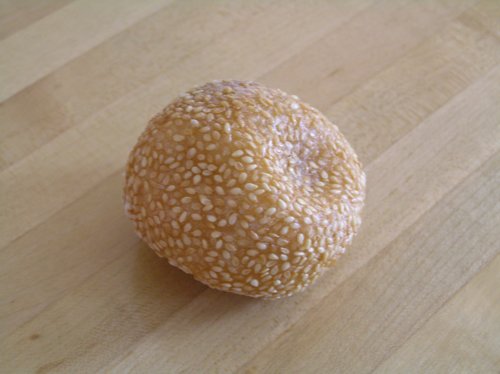Facts About Jian dui
Jian dui, or sesame balls, are a delightful Chinese pastry crafted from glutinous rice flour and coated in sesame seeds. A bite into one reveals a delightful marriage of crispiness and chewiness, with a hollow center usually filled with lotus paste, sweet black bean paste, or red bean paste. These delectable treats date back to the Tang dynasty, where they were initially known as lüdui. As people from central China migrated south, jian dui became an integral part of southern Chinese cuisine.
Jian dui is known by various names around the world, reflecting its widespread popularity. In Hong Kong, it is a staple pastry, frequently found in Chinatown bakery shops abroad. In Cambodia, it is called num kroch and typically stuffed with mung beans. In India and Sri Lanka, it is known as ellu urundai and filled with sesame seeds, jaggery, sugar, or glucose syrup. Indonesians enjoy onde-onde, filled with sweetened mung bean paste. In Japan, it goes by the name goma dango, while in Korea, it is called chamkkaegyeongdan. Malaysians refer to it as kuih bom, often filled with shredded sweetened coconut or nuts. In the Philippines, it is known as butsi, popular owing to Chinese culinary influence. In the United States, it is simply referred to as a sesame seed ball, and in Vietnam, it is known as bánh cam or bánh rán, featuring various fillings and flavors.
Jian dui has garnered global affection, with each region imparting its unique twist, highlighting the rich tapestry of cultural influences within Chinese cuisine.

 India
India